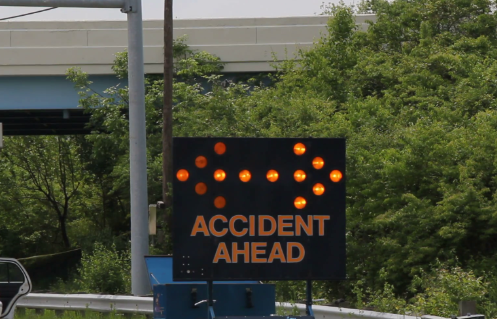National Safety Council Analysis: Traffic is Back to Pre-Pandemic Levels
Policymakers to focus on advanced technology that promotes safety
The National Safety Council released its preliminary estimates for motor vehicle fatalities in 2021, and for a second year in a row, the numbers are dark and deeply concerning. NSC data show more than 46,000 people died on U.S. roads in 2021, a 9% increase from 2020. This comes as miles traveled rebounded 11% from 2020 lows and only lags 2019 miles traveled by 1%. With the number of vehicles on our roads increasing to pre-pandemic rates, as well as the number of preventable deaths climbing across the country, NSC estimates the death rate in 2021 exceeds the rate in 2019 by 19% at 1.43 deaths per 100 million miles traveled.
Between the passage of the Infrastructure Investment and Jobs Act in November 2021 and the release of the Department of Transportation’s National Roadway Safety Strategy in January 2022, federal decision-makers are keenly focused on mobility safety. This includes provisions within the Infrastructure Investment and Jobs Act that reflect the landmark Road to Zero report led and issued by NSC in 2018, calling on policymakers and others to follow its three pillars for roadway safety: double down on what works, advance technology and prioritize safety with a Safe System approach. Additionally, the goal of zero traffic deaths was included in the National Roadway Safety Strategy, a national commitment NSC and its partners have called for since day one of the Biden Administration.
While these recent wins are moving us in the right direction, more can be done. There are several life-saving actions to be taken by federal, state, and local decision-makers to set the nation on a path to zero traffic deaths, including:
- Adopting a Safe System approach when looking at roadway safety.
- Equitable implementation of roadway safety laws, policies, procedures, and infrastructure improvements is sorely needed. Communities of color are disproportionately impacted by motor vehicle crashes, lack of access to public transportation and poor infrastructure, among other critical elements that make a safe system.
- Improved impaired driving countermeasures such as mandatory ignition interlocks for convicted drunk drivers, lowering state BAC levels to .05 and better education about the nature of impairment.
- With vehicle crashes causing 38% of preventable workplace deaths, employers should implement safe driving policies and train employees to identify and address impairment.
- As addressed in the National Roadway Safety Strategy, a comprehensive approach to speed management including lowering speed limits in accordance with roadway design.
- Installation and use of automated enforcement in an equitable manner to support safe speeds and adherence to traffic lights.
- Implementation of laws banning all cell phone use while driving including hands-free, should extend to all drivers, not just teens.
- Upgrading seat belt laws from secondary to primary enforcement and extending restraint laws should extend to every passenger in every seating position, in all kinds of vehicles because seat belts save lives.
- Standardization and acceleration of Automated Driver Assistance Systems into the fleet that have life-saving impacts.
“We are incredibly proud of the work NSC has done alongside its partners and stakeholders to ensure roadway safety is top of mind with all policymakers,” said Mark Chung, vice president of roadway practice at NSC. “But we can’t rely solely on the government to make our roads safer. Each road user must take safety personally by buckling up, slowing down, and driving distraction and impairment-free. Tens of thousands of lives will be saved.”
Motor vehicle fatality estimates are subject to slight increases and decreases as data mature. The National Safety Council uses data from the National Center for Health Statistics, a division of the Centers for Disease Control and Prevention so that deaths occurring within 100 days of the crash and on both public as well as private roadways, such as parking lots and driveways, are included in the estimates.
The National Safety Council has calculated traffic fatality estimates since 1913. Supplemental estimate information, including estimates for each state, can be found here.
Category: Driver Stuff, Featured, General Update, News, Safety, Tech Talk, Transit News











